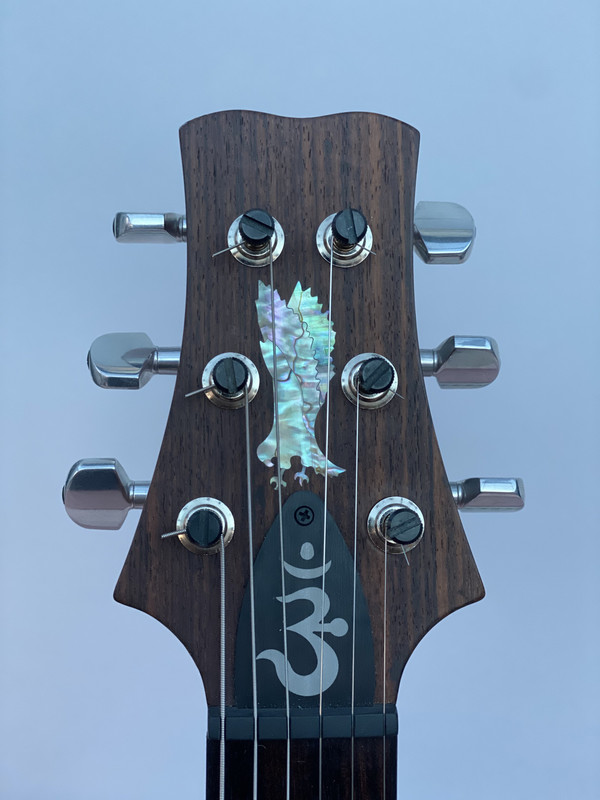John F
Here for the party
- Joined
- Apr 8, 2020
- Messages
- 403
One case exists where more wraps are better and that is 6-in line headstocks without a downward headstock angle. Looking at the strings from a side view between the nut and tuning peg you will see a steep angle on the short strings closest to the nut, and a shallow angle for the longest. That shallow string angle can exert minimal down-force on the nut which can be problematic. One problem is that excessive string vibration can sometimes pass over the nut and cause audible unwanted noise from above the nut. Another is that strings with not enough down-force over the nut will pop out of the nut slot during deep bends, especially close to the nut. A third issue is that minimal down-force will diminish tone. These reasons are why some manufacturers use string trees. It is also why Gibson purists want that steep headstock angle and suffer headstock break. The lesser angle affects the tone according to the purists.
Putting more wraps on a post increases the down-force across the nut when the wraps go down the post. This may be audible to some people, and I would suggest that adding wraps isn’t by definition wrong for whatever reason you choose.
One more thing I consider on my locking tuners:
I strive for at least 1/2 a wrap minimum. My logic is that the hole in the tuner makes the diameter from hole to hole narrower than the full diameter of the peg. Stretching the string tight and locking down makes the arc the string passes over to change as the tuner is rotated. Given a linear rotation of the tuner button will result in an inconsistent stretch of the string as it transitions from the hole in the peg to the larger diameter barrel. This can cause the tuning to jump higher unexpectedly. It also adds excessive force to the hole area of the peg which has minimal wall thickness right where the string exits the hole. My thought is that tuning across this area repeatedly can cause excessive wear at the peg hole. If a burr forms it can cause string cutting and breakage. More of a wrap increases the surface area of the string to the peg also.
Putting more wraps on a post increases the down-force across the nut when the wraps go down the post. This may be audible to some people, and I would suggest that adding wraps isn’t by definition wrong for whatever reason you choose.
One more thing I consider on my locking tuners:
I strive for at least 1/2 a wrap minimum. My logic is that the hole in the tuner makes the diameter from hole to hole narrower than the full diameter of the peg. Stretching the string tight and locking down makes the arc the string passes over to change as the tuner is rotated. Given a linear rotation of the tuner button will result in an inconsistent stretch of the string as it transitions from the hole in the peg to the larger diameter barrel. This can cause the tuning to jump higher unexpectedly. It also adds excessive force to the hole area of the peg which has minimal wall thickness right where the string exits the hole. My thought is that tuning across this area repeatedly can cause excessive wear at the peg hole. If a burr forms it can cause string cutting and breakage. More of a wrap increases the surface area of the string to the peg also.



